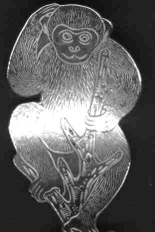Reading, more - quantum physics t'aint my strong suit - Do all right with Newtonian physics, but not quantum.
E=m*c*c where c is the speed of light - and refers to converting mass into Energy - the Energy is limited by the mass (at rest) and the speed of light.
The similarity to kinetic Energy equation of E=1/2*m*v*v
is just too striking to ignore.
Upon reading about Einstein's process of getting to his famous conclusion - apparently it did start out as an investigation in the actual inertial energy of a mass at rest. So how did he get to the definitely limited equation of E= M*C(Squared) from that investigation - and if indeed Mass increases as it approaches the speed of light - why wasn't the conversion equation unlimited - because it is definitely limited, and was ultimately proven to be true by measuring the energy of an 'atomic explosion' verses the amount of matter that was converted. That was the nexus of my conundrum - How the heck did he get there, correctly ? I have been unable to follow the line of reasoning that started with inertial energy of a body at rest to the resulting, final equation - and reconcile that with the very similar kinetic Energy equation.

Finally, brethren, whatsoever things are true, whatsoever things are honest, whatsoever things are just, whatsoever things are pure, whatsoever things are lovely, whatsoever things are of good ...
